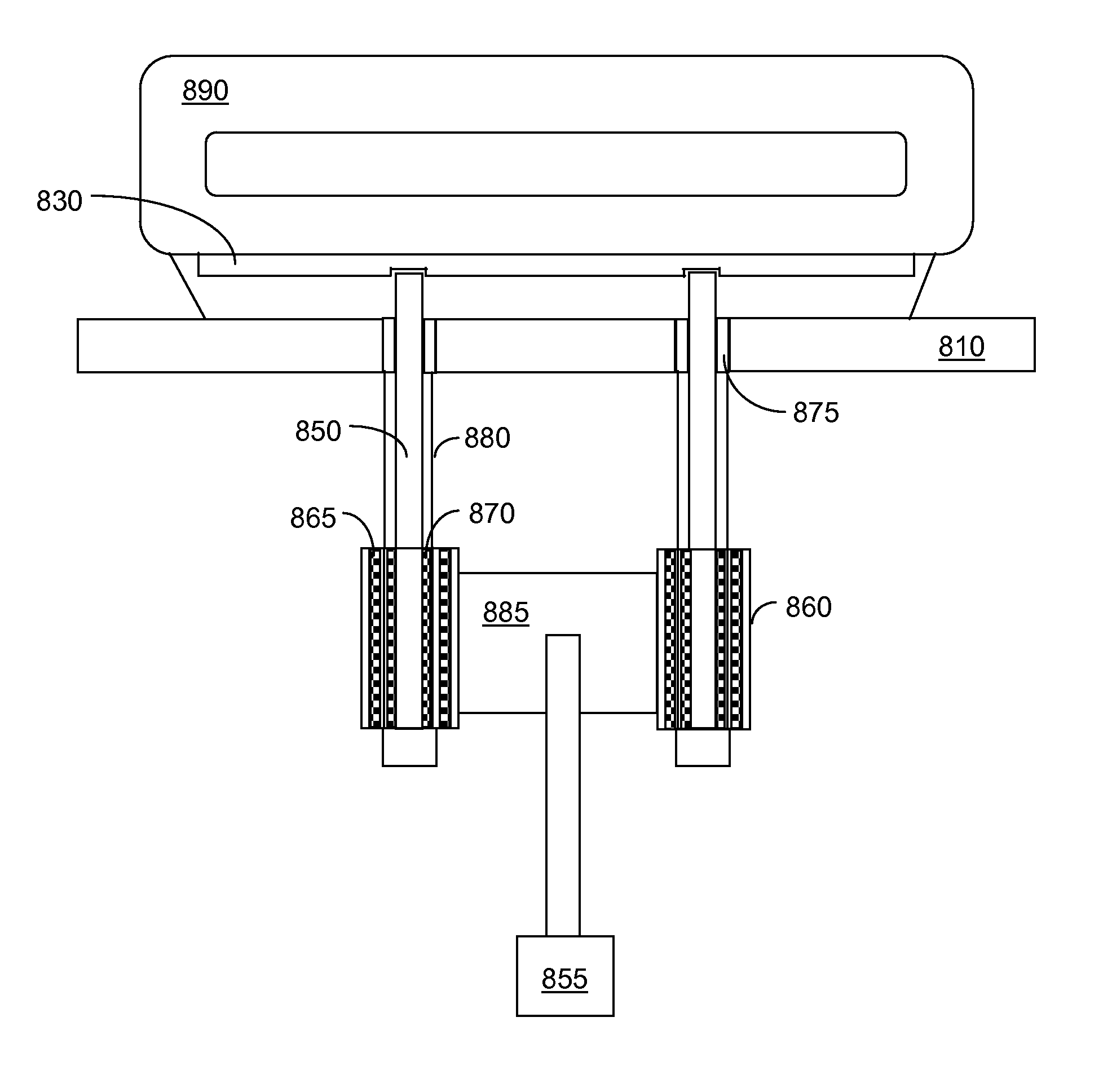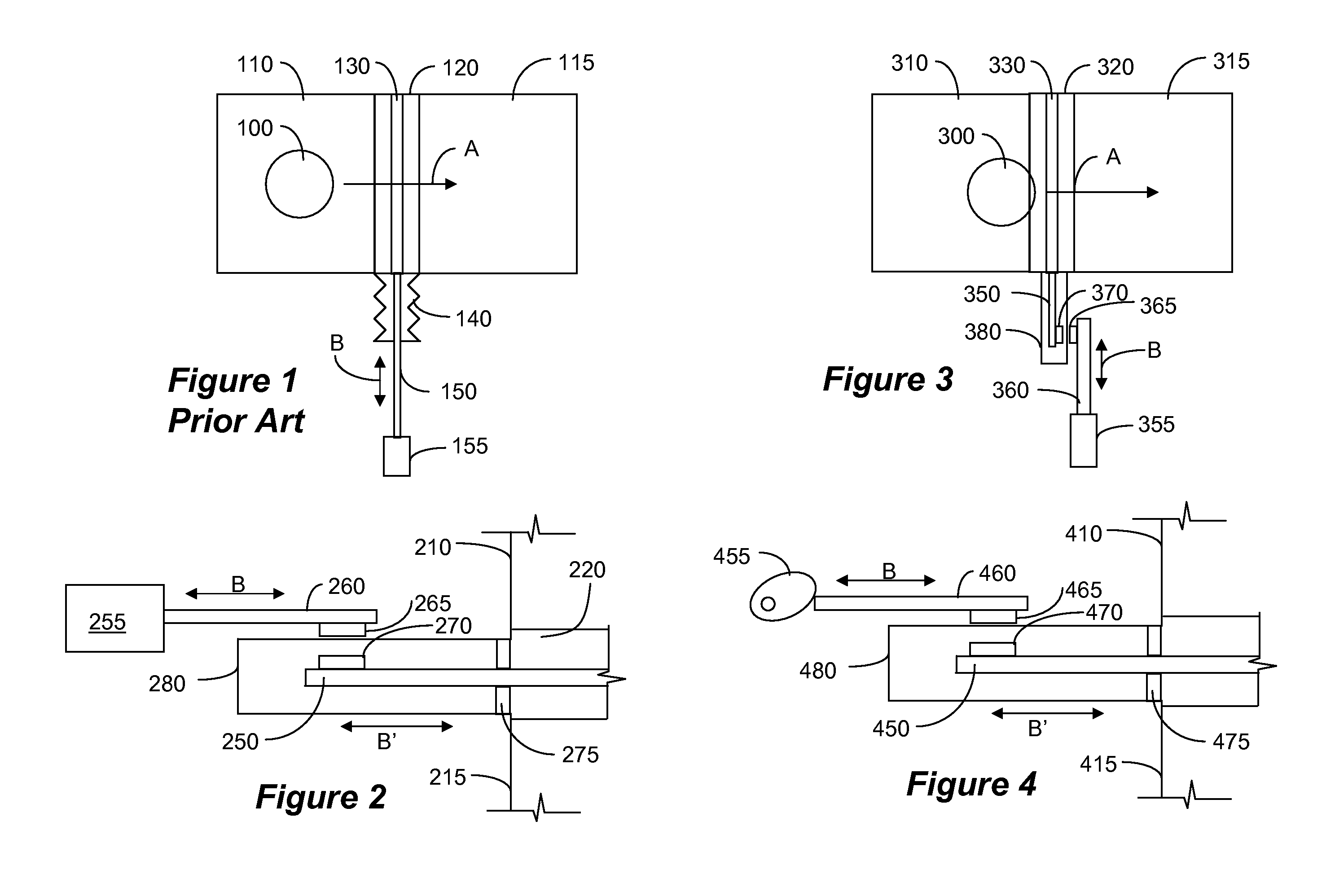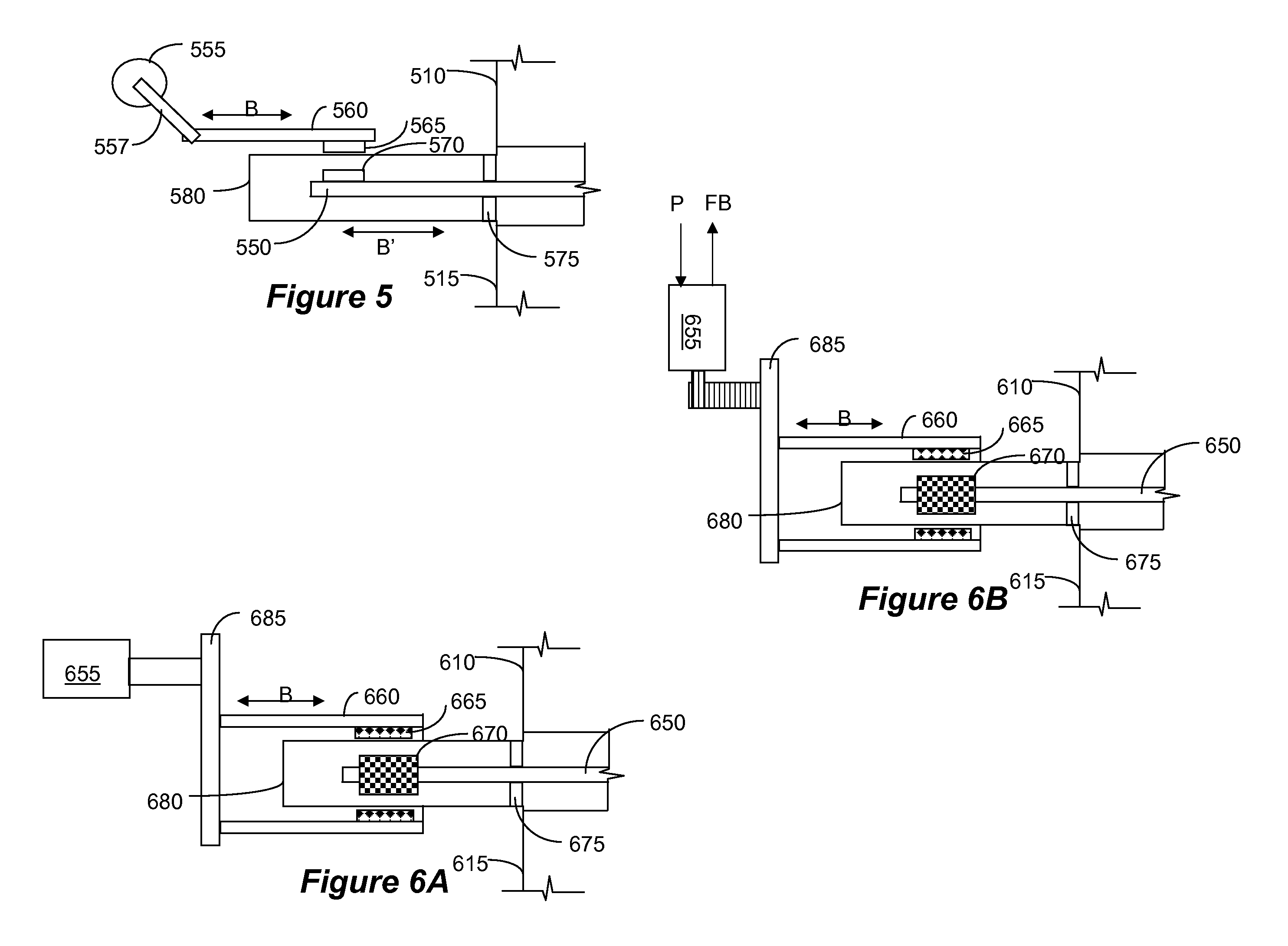Magnetically coupled valve actuator
a valve actuator and magnetic coupling technology, applied in the direction of valve operating means/release devices, water supply installation, transportation and packaging, etc., can solve the problems of increasing stress and eventual leakage, affecting the operation efficiency of the valve, and reducing the performance of the valve b, so as to avoid the use of bellows and increase the reliability of the system , the effect of high-speed valve operation
- Summary
- Abstract
- Description
- Claims
- Application Information
AI Technical Summary
Benefits of technology
Problems solved by technology
Method used
Image
Examples
Embodiment Construction
[0023]FIG. 2 is a schematic illustration of a valve arrangement according to an embodiment of the invention. As shown in FIG. 2, valve 220 (shown partially) separates chambers 210 and 215 (shown partially). The valve 220 includes a valve blade (not shown) that is activated by valve rod 250. Valve rod 250 is fitted with magnets 270, and is sealed from the ambient by a housing 280. The valve rod 250 is freely movable as shown by arrow B′ and is held in place by guides 275. On the other hand, actuator mechanism 255 actuates an actuation rod 260 in a reciprocal motion as shown by arrow B. The actuation rod 260 is also fitted with a magnet 265 that is the polar opposite of the magnet on the valve rod, creating an attractive magnetic field. Consequently, when the actuator rod 260 moves, the magnetic field of magnets 265 and 270 interact to form a magnetic coupling so that valve rod 250 follows the motion of actuator rod 260, to thereby move the valve blade and close and open the valve 220...
PUM
 Login to View More
Login to View More Abstract
Description
Claims
Application Information
 Login to View More
Login to View More - R&D
- Intellectual Property
- Life Sciences
- Materials
- Tech Scout
- Unparalleled Data Quality
- Higher Quality Content
- 60% Fewer Hallucinations
Browse by: Latest US Patents, China's latest patents, Technical Efficacy Thesaurus, Application Domain, Technology Topic, Popular Technical Reports.
© 2025 PatSnap. All rights reserved.Legal|Privacy policy|Modern Slavery Act Transparency Statement|Sitemap|About US| Contact US: help@patsnap.com



